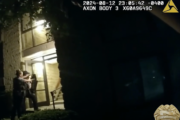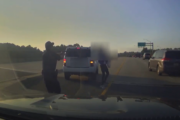The unexplained deaths of large numbers of birds in the D.C. area and elsewhere over the past month and a half appear to be on the wane, but scientists are still urging people to be cautious about safety.
Brian Evans, a migratory bird ecologist at the Smithsonian’s National Zoo and Conservation Biology Institute, said Thursday that “We know that bird deaths and sicknesses have gone down in our area, and, in fact, throughout much of the mid-Atlantic region, for the last month. And that’s great news. But we still have to be really vigilant about that.”
While the numbers, based on reports from wildlife rehab centers, are improving, “the bird deaths are continuing,” Evans said — and they’re spreading to other areas of the country.
Scientists still haven’t figured out what has been causing the deaths, mostly among fledgling common grackles, blue jays, European starlings, American robins and other species of songbirds in D.C., Maryland, Virginia, West Virginia and Kentucky, since late May. The birds have been turning up with eye swelling and crusty discharge.
And since they don’t know what’s causing the deaths and illnesses (and birds are not good at social distancing), scientists are telling the public to keep up with the safety guidelines that have been in place since the mortality event began:
- Don’t feed wild birds.
- Clean feeders and bird baths with a 10% bleach solution (one part bleach mixed with nine parts water), rinse with water, and allow to air dry.
- Avoid handling birds unless necessary. If you do handle them, wear disposable gloves. If picking up a dead bird, place an inverted plastic bag over your hand to avoid direct contact with the bird.
- Keep pets (including pet birds) away from sick or dead birds as a standard precaution.
The National Zoo has also started a nationwide online portal for people to report dead or sick birds they see. Whereas before the portal, people had to know how to get in touch with their state agencies or local rehab centers, now they can go to the National Zoo portal to report what they see, and they’ll be directed to their local center besides.
Evans said the more information scientists can get, the more they can do.
“Citizen science has played a really critical role when it comes to seeing bird mortality events in the past,” Evans said, recalling a similar event in 1994 that killed about 60% of the local population of house finches. “And it was citizen scientists … observing birds at the feeders who let us know that the event was occurring. So citizen science really can play a super important role in contributing to our understanding of this event.”








